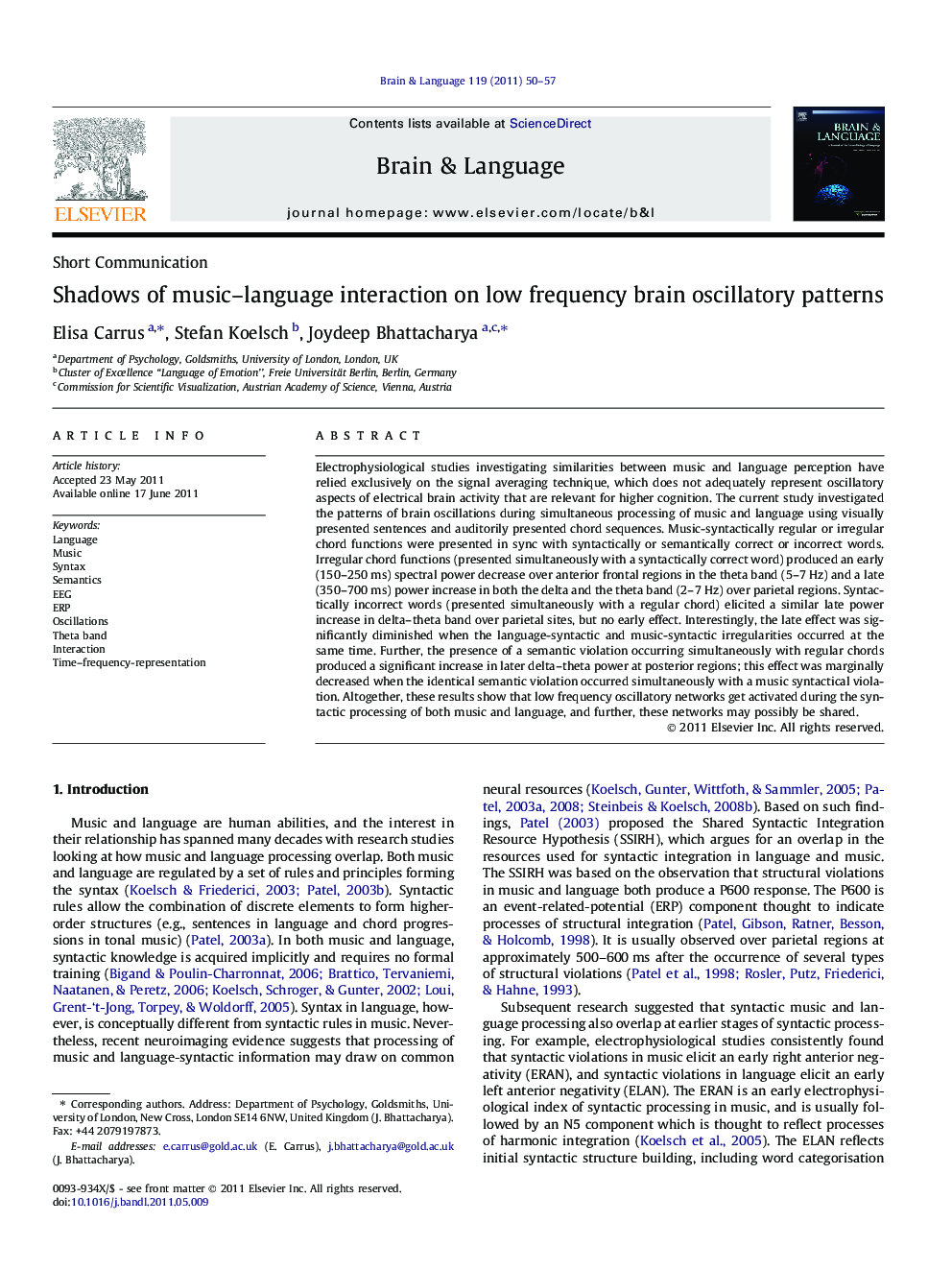| Article ID | Journal | Published Year | Pages | File Type |
|---|---|---|---|---|
| 925521 | Brain and Language | 2011 | 8 Pages |
Electrophysiological studies investigating similarities between music and language perception have relied exclusively on the signal averaging technique, which does not adequately represent oscillatory aspects of electrical brain activity that are relevant for higher cognition. The current study investigated the patterns of brain oscillations during simultaneous processing of music and language using visually presented sentences and auditorily presented chord sequences. Music-syntactically regular or irregular chord functions were presented in sync with syntactically or semantically correct or incorrect words. Irregular chord functions (presented simultaneously with a syntactically correct word) produced an early (150–250 ms) spectral power decrease over anterior frontal regions in the theta band (5–7 Hz) and a late (350–700 ms) power increase in both the delta and the theta band (2–7 Hz) over parietal regions. Syntactically incorrect words (presented simultaneously with a regular chord) elicited a similar late power increase in delta–theta band over parietal sites, but no early effect. Interestingly, the late effect was significantly diminished when the language-syntactic and music-syntactic irregularities occurred at the same time. Further, the presence of a semantic violation occurring simultaneously with regular chords produced a significant increase in later delta–theta power at posterior regions; this effect was marginally decreased when the identical semantic violation occurred simultaneously with a music syntactical violation. Altogether, these results show that low frequency oscillatory networks get activated during the syntactic processing of both music and language, and further, these networks may possibly be shared.
► We investigated oscillatory patterns during simultaneous processing of music and language. ► Violations in music and language elicited delta–theta power increase. ► Neural interaction was found during simultaneous processing of music and language violations. ► Common low frequency oscillatory networks are involved during processing of music and language.
